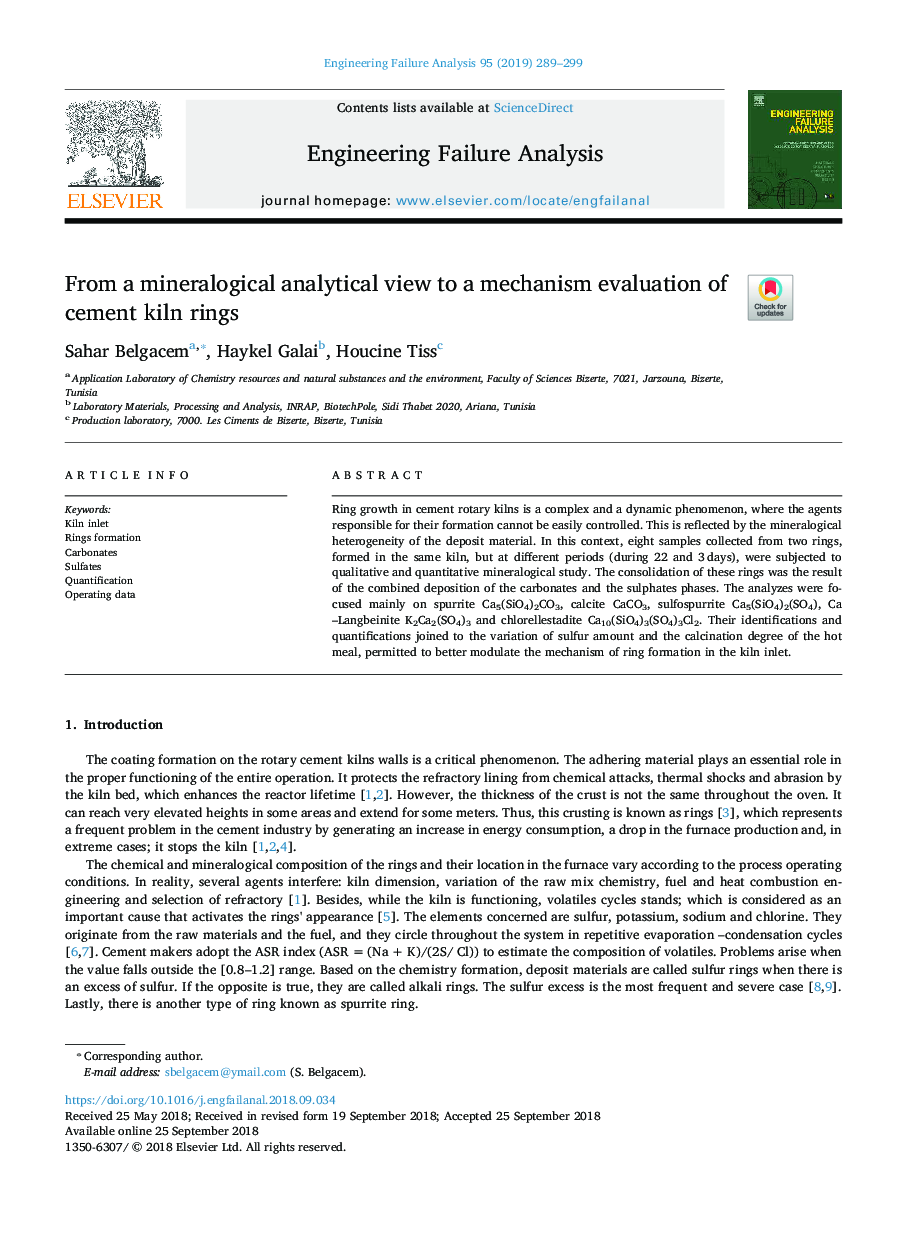| Article ID | Journal | Published Year | Pages | File Type |
|---|---|---|---|---|
| 11029920 | Engineering Failure Analysis | 2019 | 11 Pages |
Abstract
Ring growth in cement rotary kilns is a complex and a dynamic phenomenon, where the agents responsible for their formation cannot be easily controlled. This is reflected by the mineralogical heterogeneity of the deposit material. In this context, eight samples collected from two rings, formed in the same kiln, but at different periods (during 22 and 3â¯days), were subjected to qualitative and quantitative mineralogical study. The consolidation of these rings was the result of the combined deposition of the carbonates and the sulphates phases. The analyzes were focused mainly on spurrite Ca5(SiO4)2CO3, calcite CaCO3, sulfospurrite Ca5(SiO4)2(SO4), Ca -Langbeinite K2Ca2(SO4)3 and chlorellestadite Ca10(SiO4)3(SO4)3Cl2. Their identifications and quantifications joined to the variation of sulfur amount and the calcination degree of the hot meal, permitted to better modulate the mechanism of ring formation in the kiln inlet.
Related Topics
Physical Sciences and Engineering
Engineering
Industrial and Manufacturing Engineering
Authors
Sahar Belgacem, Haykel Galai, Houcine Tiss,
